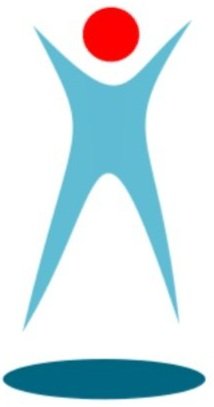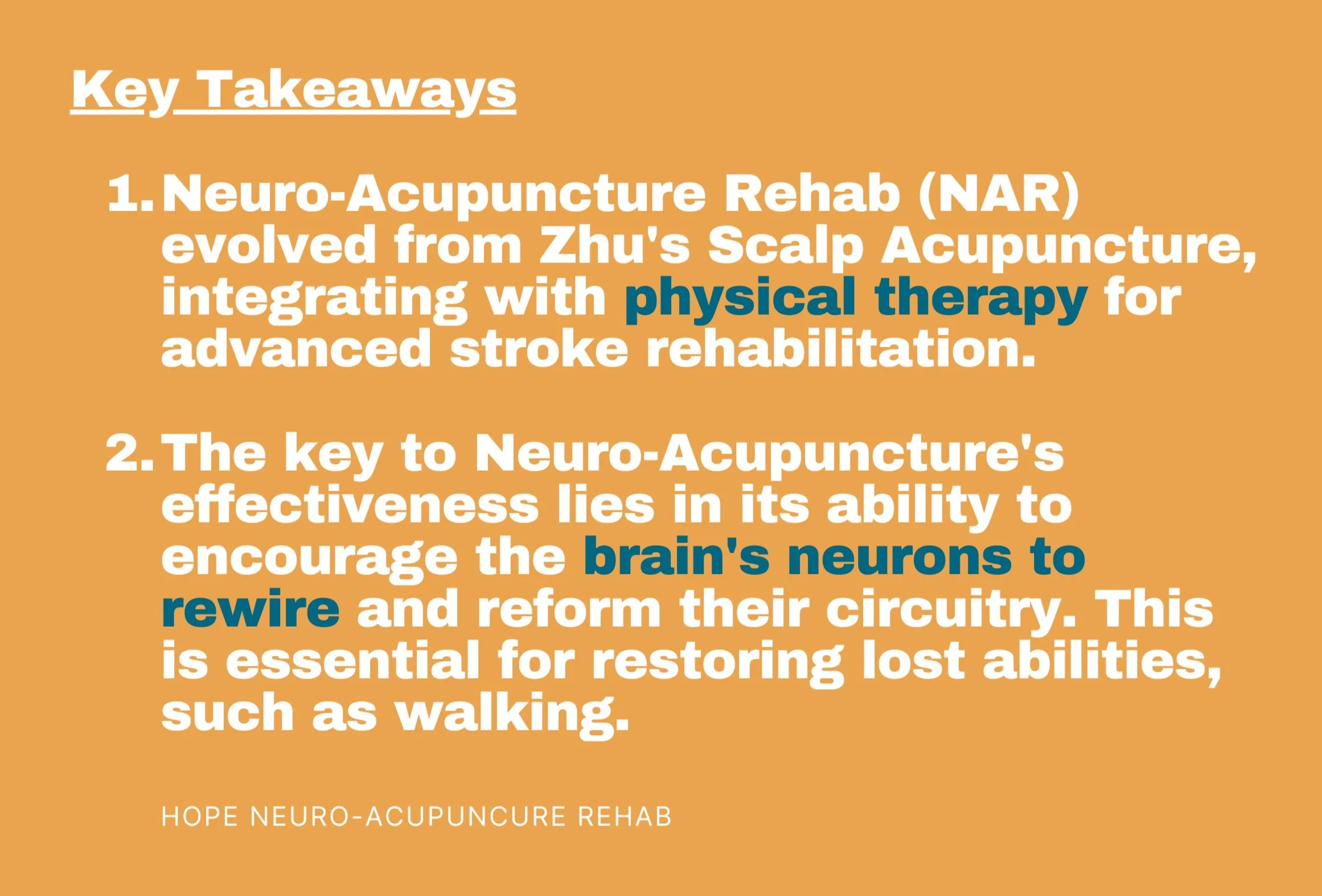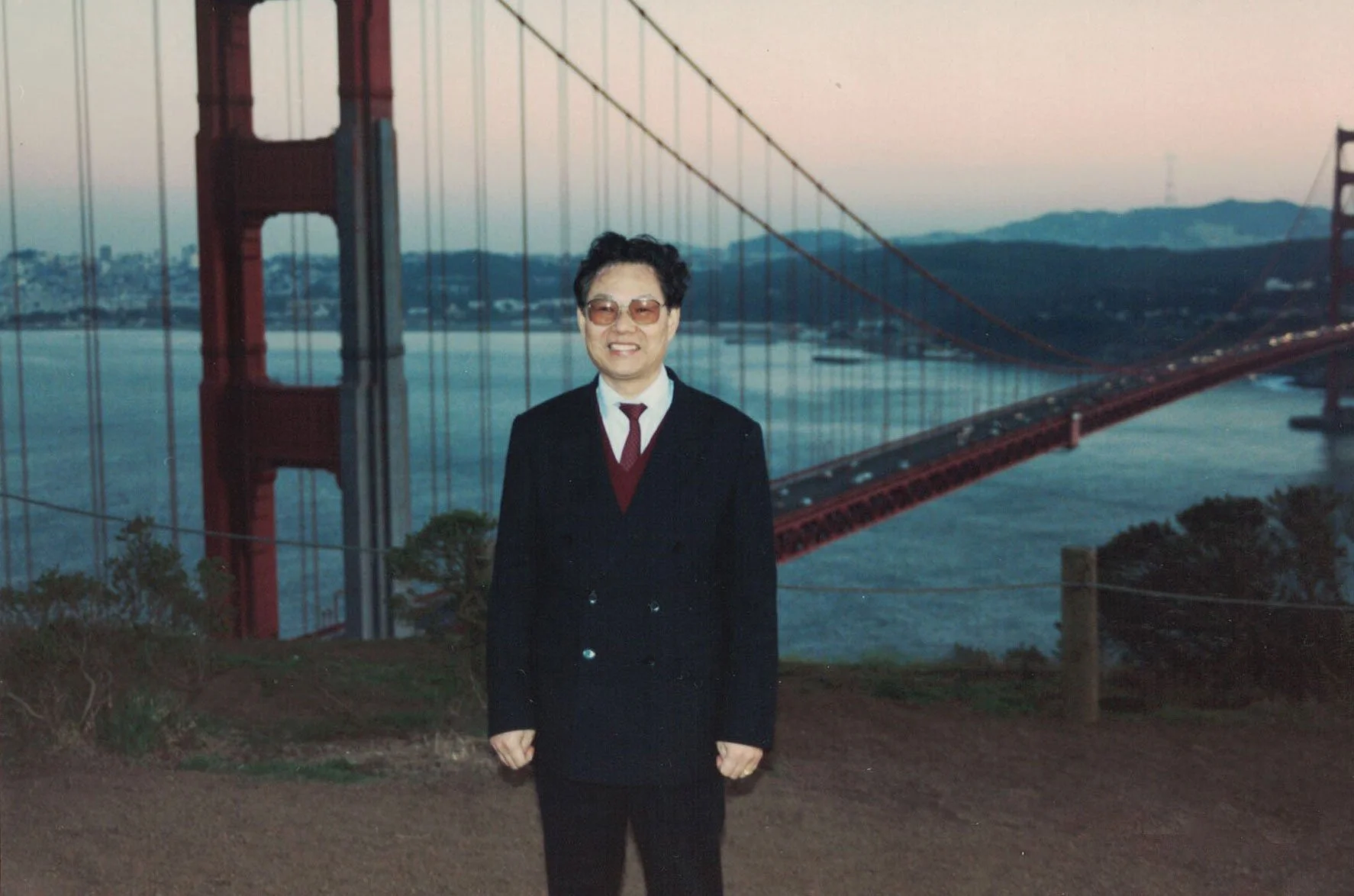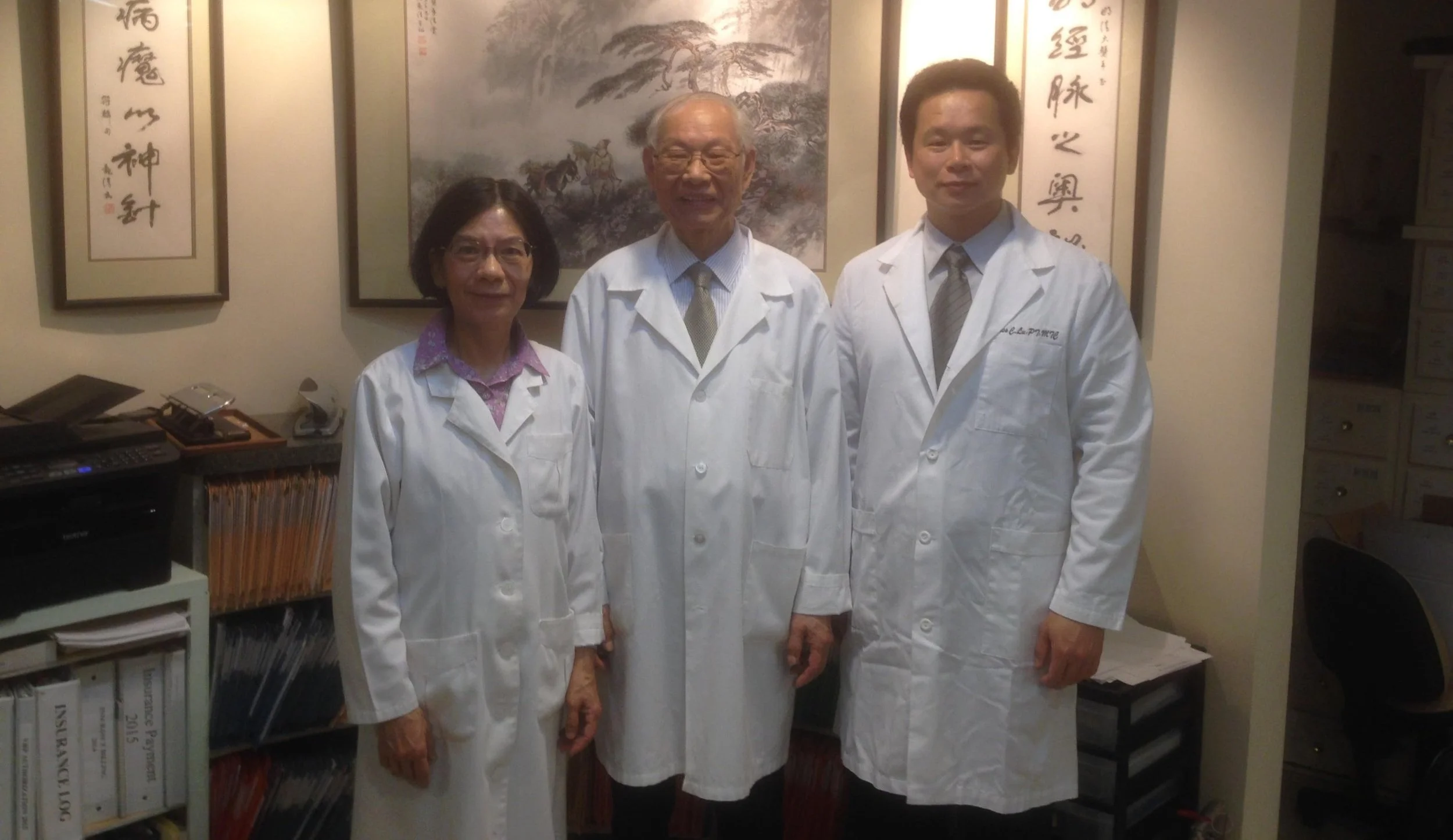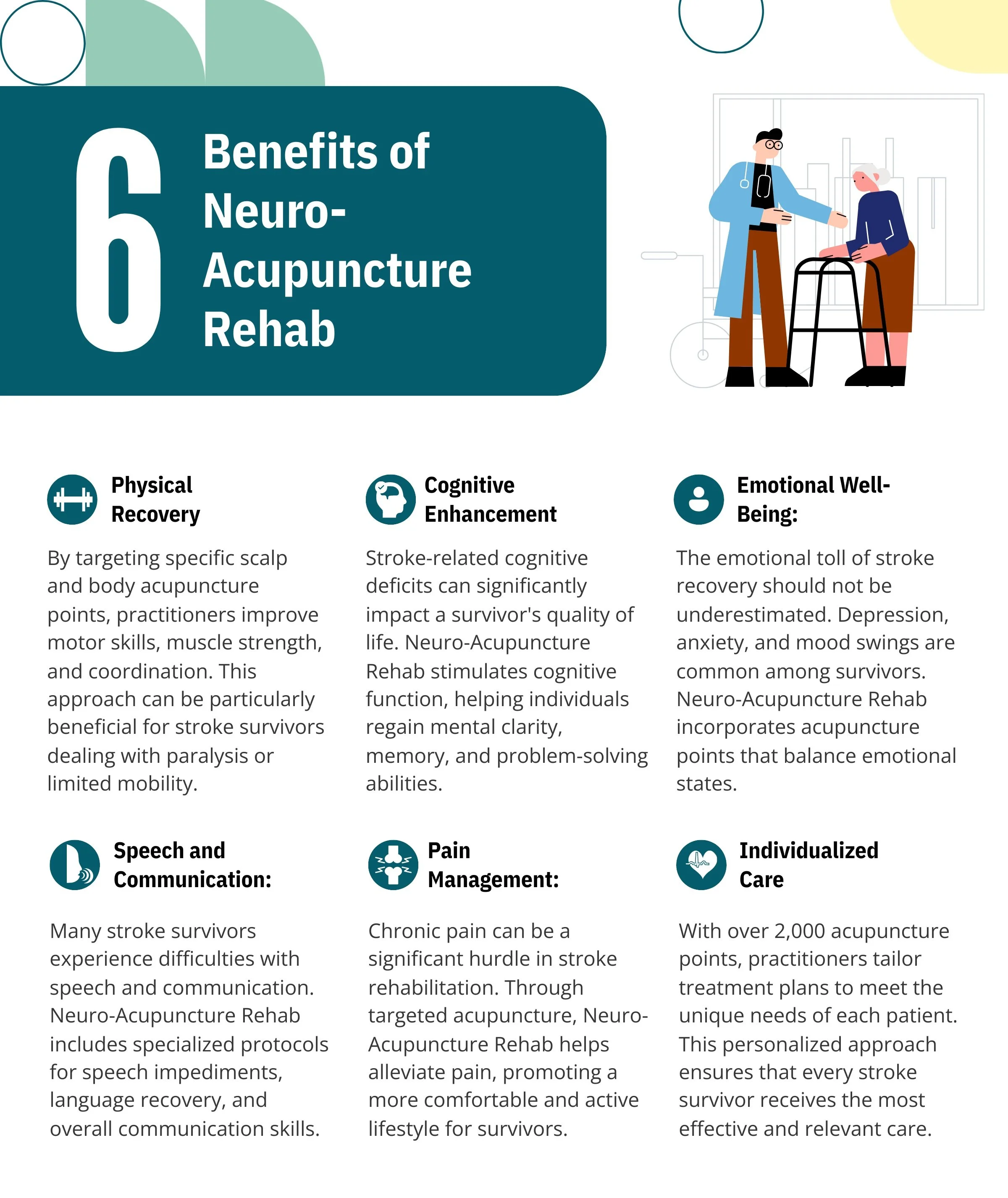How Zhu’s Scalp Acupuncture and Neuro-Acupuncture are Revolutionizing Stroke Recovery Methods (2024)
Blog Image © 2024 by HOPE Neuro-Acupuncure Rehab is licensed under CC BY-SA 4.0
Blog Image © 2024 by HOPE Neuro-Acupuncure Rehab is licensed under CC BY-SA 4.0
Table of Contents
Introduction
This article covers Zhu's Scalp Acupuncture (ZSA) and its evolution into Neuro-Acupuncture Rehab, a significant advancement in stroke rehabilitation. Created by Dr. Zhu Mingqing, Zhu's Scalp Acupuncture stimulates both the brain and nervous system. Dr. Zhu is world-famous for his instant results using scalp acupuncture for stroke.
Dr. Zhu Mingqing has been practicing acupuncture for over six decades!
Dr. James Lu has evolved this technique into Neuro-Acupuncture Rehab by combining it with physical therapy, among other Western approaches.
Let’s dive into how Neuro-Acupuncture Rehab is transforming stroke rehabilitation.
Foundations of Scalp Acupuncture
In the realm of traditional Chinese medicine, acupuncture has long been revered as a therapeutic practice with the potential to heal and restore balance within the body.
Its roots date back thousands of years, and its principles are based on the concept of energy flow (Qi) through meridians that connect various parts of the body. Little did the ancient Chinese know that these ideas would be proven thousands of years later with the discovery of the human nervous system.
Acupuncture involves the insertion of fine needles into specific points along these meridians to stimulate the body's natural healing mechanisms.
One of the remarkable offshoots of traditional acupuncture is Zhu's Scalp Acupuncture (ZSA), a technique that has gained widespread recognition for its efficacy in addressing neurological disorders, including stroke rehabilitation.
Dr. Zhu Mingqing in front of the Golden Gate Bridge
The core principle of ZSA revolves around the idea that specific points on the scalp correspond to different areas of the brain and nervous system.
By targeting these precise points with acupuncture needles, practitioners aim to stimulate and facilitate the body's innate ability to heal and recover.
Research has shown that ZSA can enhance the brain's neuroplasticity, enabling it to adapt and reorganize after a stroke.
It promotes the regeneration of damaged neurons and fosters improved communication between the brain and the rest of the body. As a result, stroke survivors often experience significant improvements in motor function, speech, and overall quality of life.
As we delve deeper into the world of Neuro-Acupuncture Rehab, it's essential to recognize that ZSA serves as the foundational knowledge upon which this approach is built.
In the following sections, we will explore how Neuro-Acupuncture Rehab expands upon the principles of ZSA to offer even more profound benefits in stroke rehabilitation.
Origins of Neuro-Acupuncture Rehab
In recent years, a groundbreaking advancement known as "Neuro-Acupuncture Rehab" has emerged, pushing the boundaries of what's possible in stroke recovery.
Dr. James Lu, founder of HOPE Neuro-Acupucuncture Rehab, with Dr. Zhu
Neuro-Acupuncture Rehab represents the natural progression of ZSA, building upon its foundational principles and taking them to new heights. This innovative approach continues to focus on stimulating specific points on the scalp to access and activate different regions of the brain and nervous system. However, it incorporates a more comprehensive and refined understanding of neurophysiology and acupuncture techniques.
Neuro-Acupuncture Rehab takes advantage of the brain's remarkable plasticity, offering stroke survivors the opportunity for extensive neural regeneration and functional recovery. This approach not only targets physical impairments but also focuses on cognitive and emotional well-being, acknowledging the holistic nature of rehabilitation.
The integration of advanced acupuncture techniques, such as scalp, body, and auricular acupuncture, allows for a more comprehensive and synergistic treatment approach. This multi-dimensional strategy addresses a wide range of post-stroke issues, including motor deficits, speech difficulties, depression, and cognitive impairments.
Watch the video below for a real-life example of Neuro-Acupuncture!
The Holistic Approach
Neuro-Acupuncture Rehab stands out not only for its advanced techniques but also for its holistic approach to stroke rehabilitation. It recognizes that stroke survivors often face a multitude of challenges beyond physical impairments, including emotional and cognitive issues. As a result, this innovative therapy encompasses a wide range of modalities to address the full spectrum of post-stroke needs.
6 Benefits of Neuro-Acupuncture Rehab © 2024 by Jesse Lu is licensed under CC BY-NC-ND 4.0
The holistic nature of Neuro-Acupuncture Rehab acknowledges that recovery from stroke extends far beyond physical healing. It recognizes the profound interplay between the body, mind, and emotions, and aims to restore balance in all these aspects.
Neuro-Acupuncture Rehab as the Future of Stroke Rehabilitation
As we've explored the foundations and applications of Neuro-Acupuncture Rehab (NAR), it becomes evident that this groundbreaking approach represents a significant leap into the future of stroke rehabilitation. NAR is the culmination of centuries of acupuncture wisdom and modern scientific understanding, making it a dynamic and evolving therapy that offers immense promise.
Personalized Precision: Unlike one-size-fits-all approaches, NAR takes personalization to the next level. Each treatment plan is tailored to the individual's unique needs, ensuring that stroke survivors receive the most effective care possible. This personalized precision enhances recovery outcomes and maximizes the potential for improvement.
Expanding Research: The field of NAR is experiencing continuous growth in research and development. Ongoing studies and clinical trials aim to refine and expand our understanding of how this therapy can benefit stroke survivors. As research advances, NAR's potential to unlock new avenues of recovery becomes increasingly evident.
Integration with Modern Medicine: NAR does not exist in isolation. It seamlessly integrates with modern medical practices, providing a complementary approach to stroke rehabilitation. The collaboration between NAR practitioners, physical therapists, and healthcare providers enhances the overall care received by stroke survivors.
Promising Outcomes: The success stories and positive outcomes associated with NAR continue to grow. Stroke survivors who undergo NAR often report substantial improvements in motor skills, speech, mental clarity, and emotional well-being. These promising outcomes are a testament to the therapy's effectiveness.
Benefits of Neuro-Acupuncture Rehab
Neuro-Acupuncture Rehab (NAR) stands as a beacon of hope for stroke survivors, offering a wide range of transformative benefits that encompass both physical and emotional well-being. In this section, we'll explore these benefits in more detail, shedding light on why NAR is considered the future of stroke rehabilitation.
Enhanced Motor Function: One of the most significant advantages of NAR is its ability to significantly improve motor function in stroke survivors. By stimulating specific acupuncture points, NAR facilitates the reconnection of neural pathways, leading to increased mobility, muscle strength, and coordination. This means that tasks once thought impossible become achievable, providing a renewed sense of independence.
Improved Cognitive Abilities: Stroke-related cognitive deficits can be challenging for survivors. NAR incorporates techniques that target cognitive enhancement, helping individuals regain mental clarity, memory, and problem-solving skills. This not only improves daily functioning but also enhances the overall quality of life.
Emotional Well-Being: The emotional toll of stroke recovery can be immense, leading to depression, anxiety, and mood swings. NAR recognizes the emotional aspects of rehabilitation and employs acupuncture points and techniques that help balance emotions and promote mental well-being.
Speech and Communication: Communication difficulties are a common hurdle for stroke survivors. NAR includes specialized protocols aimed at addressing speech impediments and facilitating language recovery. As a result, individuals can regain the ability to express themselves effectively, fostering improved social interactions.
Pain Management: Chronic pain can hinder recovery progress and decrease the overall quality of life. NAR employs targeted acupuncture to alleviate pain.
Tailored Care: Each stroke survivor's journey is unique, and NAR recognizes the importance of personalized treatment plans. Practitioners adapt their approaches to meet the specific needs and challenges faced by individuals, ensuring that the therapy remains highly effective and relevant.
Integration of Modern Neuroscience
An essential element that positions Neuro-Acupuncture Rehab (NAR) as the future of stroke rehabilitation is its seamless integration with modern neuroscience.
Neuroscience has unveiled the incredible potential of the brain's plasticity, its ability to reorganize and adapt. NAR harnesses this knowledge by precisely targeting acupuncture points on the scalp and body that correspond to specific areas of the brain and nervous system. This targeted stimulation fosters neural regeneration and the establishment of new connections, facilitating recovery.
Moreover, NAR incorporates advancements in neuroimaging, such as functional MRI (fMRI), to assess brain activity and monitor changes during treatment. This real-time feedback allows practitioners to fine-tune therapy for each individual, ensuring optimal results.
How does Neuro-Acupuncture Help People Walk Again?
Neuro-Acupuncture is a revolutionary technique that has shown remarkable results in helping individuals regain their ability to walk, especially after strokes. This innovative approach combines the principles of acupuncture with specific rehabilitation techniques to maximize recovery. Let's break down how this method works, drawing upon a Dr. James Lu’s explanation and using a couple of analogies to illustrate the process.
1. Stimulating the Brain's Recovery Pathways:
Neuro-Acupuncture works by stimulating areas of the brain associated with motor, sensory, or other functional impairments. Imagine the brain as a dormant garden where certain pathways have become overgrown and inaccessible due to a stroke. Neuro-Acupuncture acts like a skilled gardener, using needles as tools to clear and reactivate these pathways.
The precise manipulation of these needles induces brain cells to forge new connections with surrounding neurons. This process is akin to planting new seeds in the garden, which eventually grow and reconnect the once isolated paths, allowing signals to flow freely again.
2. Reforming Circuitry to Restore Abilities:
The key to Neuro-Acupuncture's effectiveness lies in its ability to encourage the brain's neurons to rewire and reform their circuitry. This is essential for restoring lost abilities, such as walking.
Think of it as repairing a complex railway network where the tracks (neural pathways) have been damaged. Neuro-Acupuncture repairs and rebuilds these tracks, enabling the trains (nerve signals) to reach their destinations successfully, thereby restoring movement and function.
3. Integrating “Aggressive” Therapeutic Techniques:
A critical component of this approach is the integration of aggressive therapeutic techniques while the acupuncture needles are still in place. This unique method of rehab has been proven to induce the maximum potential of healing and help the patient walk much faster than the traditional physical therapy.
4. Enhanced Recovery Speed Compared to Traditional Methods:
Practitioners have observed that patients undergoing Neuro-Acupuncture, coupled with these therapeutic techniques, often experience faster recovery rates compared to those receiving traditional physical therapy alone.
The Future of Stroke Rehabilitation
As research continues to expand our understanding of NAR's mechanisms and applications, we are witnessing the emergence of even more sophisticated and effective protocols. The synergy between traditional acupuncture wisdom and modern neuroscientific insights continues to yield groundbreaking results.
In the near future, NAR is currently becoming an integral part of stroke rehabilitation programs worldwide. Its holistic approach, tailored care, and transformative benefits offer new hope to stroke survivors and their families. Many modern day hospitals are now implementing neuro-acupuncture in their aftercare. With ongoing advancements in neuroscience and personalized treatment plans, NAR is set to enhance the lives of countless individuals affected by strokes.
Taking the First Step Towards Recovery
If you or a loved one has been affected by a stroke, the path to recovery may seem challenging. However, with Neuro-Acupuncture Rehab (NAR), there is newfound hope and a concrete path to follow.
The first step towards recovery begins with seeking the expertise of a qualified NAR practitioner. If you live near San Jose, CA, come visit us!
During your NAR journey, you'll experience the power of acupuncture's ancient wisdom combined with modern scientific insights. As you progress, you'll likely witness improvements in motor function, speech, cognitive abilities, and emotional well-being.
NAR's transformative benefits offer not just recovery but the chance to regain a fulfilling life post-stroke. Taking that first step towards NAR is a bold move towards a brighter future.
Further Resources:
For more information on acupressure and holistic healing, explore our sections on Traditional Chinese Medicine (TCM), Physical Therapy, and Sport Medicine. Your holistic health journey is just beginning, and there's a wealth of knowledge and support waiting for you.
Testimonials from athletes and patients who have experienced the benefits of sports acupuncture can be read in our Testimonials section.
Want to experience the amazing benefits of sports acupuncture? Come to our clinic in San Jose, California!
On This Page

